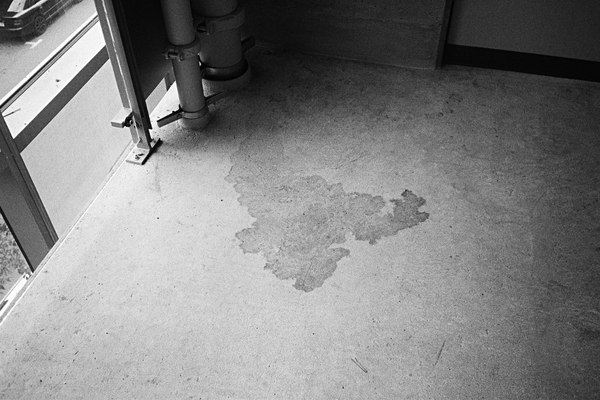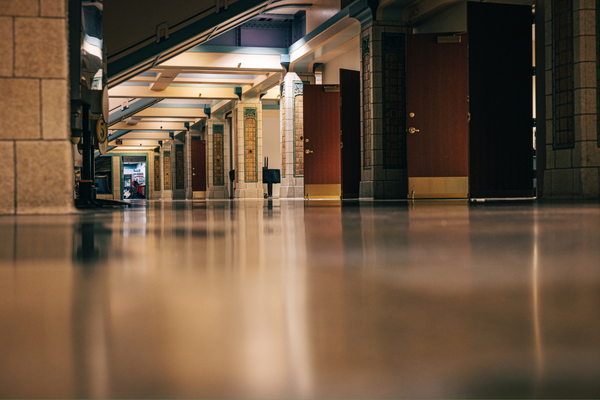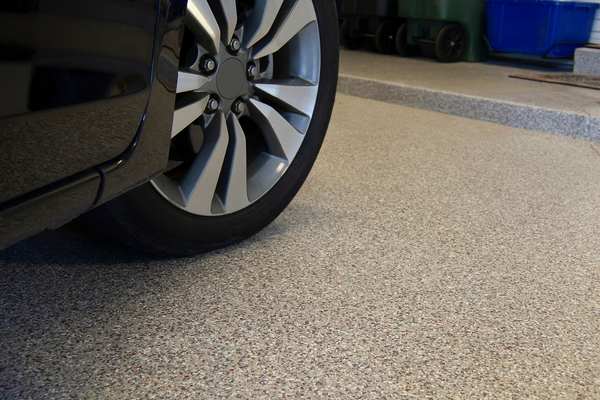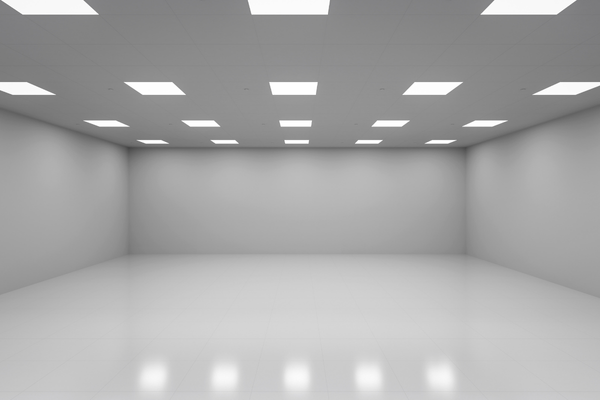Epoxy Floor Maintenance & Care: Complete Guide to Epoxy Floor Maintenance & Longevity
Introduction:
Epoxy floor maintenance plays a crucial role in preserving the beauty and function of coated surfaces throughout Rock Hill, SC homes and businesses. Property owners who understand the difference between epoxy floor coatings and uncoated concrete can make better decisions about their floor care routines. Uncoated concrete remains porous and difficult to clean, while epoxy creates a non-porous barrier that simplifies maintenance tasks significantly.
Professional epoxy floor installations provide superior durability compared to bare concrete, yet they still require proper attention to maintain their appearance over time. The benefits of consistent epoxy floor care extend far beyond simple aesthetics. Regular maintenance prevents costly repairs, extends the coating’s lifespan, and maintains the floor’s slip-resistant properties that keep families safe.
Several factors influence how often property owners need to perform epoxy garage floor maintenance. Work environment conditions play a major role in determining cleaning frequency. Garages that house multiple vehicles, workshops with heavy machinery, or spaces used for automotive repairs require more frequent attention than storage areas with minimal foot traffic.
Dirt and soilage accumulation levels vary greatly between different properties. Homes located near construction sites, unpaved roads, or areas with heavy seasonal pollen may need daily sweeping, while properties in cleaner environments might manage with less frequent care. Traffic patterns and usage intensity also affect maintenance schedules, with high-traffic zones requiring additional attention to prevent premature wear.

Table of Contents

Developing a Maintenance Program
Creating an effective maintenance program starts with understanding the importance of routine maintenance schedules. Many property owners in Rock Hill, SC discover that consistent daily and weekly tasks prevent major problems that could require expensive repairs or complete floor replacement. Top Flight Garage Floor has observed through many years of experience that customers who follow structured maintenance programs enjoy floors that look newer longer.
Customizing maintenance based on specific environment needs helps property owners avoid both under-cleaning and over-cleaning their epoxy surfaces. Workshop environments with oil changes and mechanical work need daily attention to grease-prone areas, while residential garages used primarily for vehicle storage might follow less intensive schedules. Each environment presents unique challenges that require tailored approaches.
Property owners often question whether preventive maintenance costs more than reactive repairs. The cost-benefit analysis consistently favors preventive care because small daily tasks prevent major issues that require professional intervention. Regular maintenance preserves the floor’s warranty coverage and prevents voiding of manufacturer guarantees due to neglect.

Daily Maintenance Practices
Daily Sweeping Protocol
Understanding how to maintain epoxy floors begins with proper daily sweeping techniques. Equipment selection makes a significant difference in cleaning effectiveness and floor preservation. Standard household brooms work well for light debris removal, while mechanized cleaning equipment handles larger spaces more efficiently.
Proper brush selection prevents unnecessary damage to epoxy surfaces. Soft bristles remove dust and dirt without scratching the coating, while stiff brushes can cause permanent damage that reduces the floor’s gloss and creates areas where dirt accumulates more easily. Property owners should inspect their cleaning tools regularly and replace worn brushes before they damage the epoxy surface.
Preventive measures like strategic mat placement at entryways reduce the amount of dirt that reaches the main floor area. Heavy-duty mats capture moisture and debris before they spread throughout the garage, reducing daily cleaning requirements. Dust and dirt prevention strategies include keeping garage doors closed when possible and addressing sources of airborne particles near the property.
Traffic Management
Protecting high-traffic areas requires identifying zones that receive the most wear and implementing protective measures. Vehicle entry points, workbench areas, and storage zones typically experience the heaviest use and benefit from additional attention during daily maintenance routines.
Entry point contamination control involves addressing dirt, moisture, and chemical residues before they spread to other areas of the garage. Simple practices like removing shoes before entering certain areas or placing drip pans under vehicles help maintain cleaner floors with less effort.

Weekly Deep Cleaning Procedures
Scrubbing Frequency Guidelines
The best way to clean epoxy floors includes weekly scrubbing sessions that address accumulated grime that daily sweeping cannot remove. Standard weekly scrubbing for all areas prevents buildup that becomes increasingly difficult to clean over time. This regular attention maintains the floor’s appearance and prevents staining that could become permanent.
Daily scrubbing for high-traffic zones provides additional protection where floors experience the most wear. Areas around vehicle doors, workbenches, and frequently used storage locations benefit from daily attention with appropriate cleaning solutions and techniques.
Daily attention for oil and grease-prone areas prevents these substances from penetrating the epoxy surface or creating slip hazards. Automotive work areas, machinery locations, and chemical storage zones require immediate attention when spills occur, followed by daily inspections to address any residual contamination.
Proper Cleaning Techniques
Manual cleaning with mop and bucket methods provides thorough control over cleaning solution application and scrubbing pressure. Property owners can adjust their technique based on the type and amount of soil present, giving extra attention to problem areas while maintaining gentle treatment of the epoxy surface.
Mechanized scrubbing offers improved productivity for larger garage spaces or commercial applications. Automatic scrubbers maintain consistent pressure and cleaning solution application, reducing labor time while achieving uniform results across the entire floor surface.
Detergent selection and application affects both cleaning effectiveness and epoxy longevity. pH-neutral cleaners preserve the coating’s integrity while removing common garage soils effectively. Strong alkaline or acidic cleaners may damage the epoxy over time and should be avoided unless specifically recommended by the coating manufacturer.

Immediate Response Protocols
Spill Management
Learning how to care for epoxy floors includes understanding immediate cleanup procedures for all liquid spills. Quick action prevents staining, chemical damage, and safety hazards that could affect both the floor and anyone using the space. Liquid spills that remain on epoxy surfaces for extended periods may cause permanent discoloration or coating damage.
Safety hazard prevention extends beyond floor protection to include personal safety considerations. Spilled automotive fluids, cleaning chemicals, or other liquids create slip hazards that increase accident risk. Immediate cleanup protects both the floor investment and family safety.
Chemical-specific response protocols help property owners address different types of spills appropriately. Water-based spills require different treatment than oil-based substances, and aggressive chemicals need special handling procedures to prevent both floor damage and personal injury.
Chemical Resistance Considerations
Understanding coating limitations with harsh chemicals helps property owners avoid damage from inappropriate cleaning products or accidental spills. While epoxy provides excellent chemical resistance, certain substances can cause softening, discoloration, or complete coating removal if left in contact with the surface for extended periods.
Manufacturer consultation guidelines provide specific information about chemical compatibility with particular epoxy formulations. Top Flight Garage Floor provides detailed information about garage floor coatings and their resistance to common garage chemicals, helping customers make informed decisions about floor care products.
Handling caustics, acids, and solvents requires special precautions to protect both the floor and the person performing the cleanup. Strong chemicals may require neutralization before cleanup, and proper disposal methods prevent environmental contamination and comply with local regulations.

Damage Prevention and Repair
Preventing Physical Damage
Avoiding scraping, sliding, and dropping heavy objects protects epoxy floors from physical damage that compromises both appearance and function. Sharp objects, metal tools, and heavy equipment can create gouges that allow moisture penetration and lead to coating failure if not addressed promptly.
Proper protection methods for equipment movement include using protective pads, dollies, or temporary covering materials when moving heavy items across the floor. Planning equipment movement routes and preparing protective measures prevents accidental damage during garage organization or automotive work.
Preventing deep cuts and gouges requires awareness of potential hazards and implementing protective strategies before problems occur. Regular inspection of tools and equipment helps identify items that might damage the floor if dropped or dragged across the surface.
Scratch and Gouge Repair Process
Property owners can address minor damage using specific repair procedures that restore both appearance and protection. Area cleaning with TSP detergent removes oil, grease, and other contaminants that could interfere with repair materials’ adhesion to the existing coating.
Sanding technique with 100-grit sandpaper smooths damaged areas and creates proper surface preparation for repair materials. Edge feathering creates smooth transitions between the damaged area and surrounding coating, preventing visible repair lines that detract from the floor’s appearance.
Proper drying procedures allow complete moisture removal before applying repair materials. Trapped moisture under repair coatings can cause adhesion problems and lead to repair failure that requires additional work to correct.
Coating material application requires matching the original product and following manufacturer instructions for mixing, application, and curing. Professional-quality repairs often require consultation with experienced contractors like Top Flight Garage Floor to achieve invisible results.

Stain Prevention and Removal Strategies
General Stain Removal Approach
How to clean epoxy floors effectively includes understanding progressive treatment approaches that start with mild solutions and advance to stronger methods as needed. This approach prevents unnecessary exposure to harsh chemicals while addressing stains effectively.
Safety equipment requirements include rubber gloves, eye protection, and adequate ventilation when working with any cleaning chemicals. Personal protective equipment guidelines help prevent chemical burns, respiratory irritation, and other health hazards associated with stain removal products.
Specific Stain Types
Grease and Oil Stains:
Understanding the 24-hour critical window helps property owners respond quickly to prevent permanent staining. Oil and grease can penetrate epoxy surfaces if left untreated, creating dark spots that become increasingly difficult to remove over time.
TSP scrubbing procedures provide effective treatment for fresh oil and grease contamination. Following label instruction compliance protects both the person performing the cleaning and the epoxy surface from damage due to improper chemical use.
Dried Spills and Stubborn Stains:
Plastic tool residue removal techniques address hardened spills without scratching the epoxy surface. Metal scrapers and sharp tools can damage the coating, while plastic tools provide sufficient cutting action for most dried residues.
Ammonia-based household cleaner application provides additional cleaning power for stubborn stains that resist initial treatment attempts. Surface protection techniques prevent cleaner contact with surrounding areas and reduce the risk of uneven cleaning results.
Specialized Maintenance Issues
Rubber Burn Removal
Common sources like forklift and vehicle tires create rubber burns that appear as dark marks on epoxy surfaces. These marks result from tire compounds transferring to the floor under high heat or friction conditions.
The step-by-step removal process begins with citric acid cleaner application to break down rubber compounds. Mechanical agitation techniques help work the cleaner into the stain while avoiding damage to the surrounding epoxy coating.
TSP emulsion formation creates a cleaning mixture that lifts rubber residues from the epoxy surface. Thorough scrubbing and rinsing procedures remove both the rubber contamination and cleaning residues that could attract future soiling.
Environmental and Safety Compliance
Proper waste disposal methods protect both the environment and property owners from legal liability. Cleaning residues, contaminated materials, and chemical containers require appropriate disposal through approved channels rather than standard household waste streams.
Sanitary sewer versus storm sewer guidelines affect how property owners dispose of cleaning wastewater. Storm sewers connect directly to natural waterways, while sanitary sewers route through treatment facilities that remove contaminants before water discharge.
Local regulation compliance ensures that cleaning and maintenance activities meet Rock Hill, SC environmental standards. Property owners should research local requirements and contact appropriate authorities with questions about proper disposal methods.
Long-Term Maintenance Benefits
Scratch minimization through proper dust control prevents abrasive particles from damaging the epoxy surface during normal use. Regular removal of sand, grit, and other hard particles maintains the floor’s glossy appearance and prevents premature wear.
Soilage buildup prevention reduces cleaning time and effort while maintaining better hygiene in garage environments. Consistent maintenance prevents the accumulation of oil, grease, and other contaminants that become increasingly difficult to remove over time.
Extended floor life and appearance preservation protects the property owner’s investment while maintaining the space’s functionality and aesthetic appeal. Well-maintained epoxy floors continue looking new for many years, while neglected surfaces show wear and damage much sooner.
Cost savings through preventive maintenance significantly exceed the expense of regular cleaning supplies and labor. Professional floor replacement or major repairs cost substantially more than consistent daily and weekly maintenance activities.

Maintenance Program Implementation
Creating customized maintenance schedules allows property owners to address their specific needs without over-maintaining or under-maintaining their epoxy floors. Factors like usage patterns, environmental conditions, and available time influence the ideal maintenance schedule for each property.
Staff training requirements apply primarily to commercial and industrial facilities, but residential property owners also benefit from understanding proper techniques and safety procedures. Family members who help with maintenance tasks should understand how to keep epoxy floors shiny without causing damage.
Equipment and supply procurement includes identifying reliable sources for cleaning tools, chemicals, and repair materials. Building relationships with local suppliers and maintaining adequate inventory prevents delays when maintenance tasks need immediate attention.
Performance monitoring and adjustment protocols help property owners evaluate their maintenance program’s effectiveness and make improvements as needed. Regular floor inspections reveal areas that need additional attention and help identify problems before they require major repairs.
Can you steam clean epoxy floors safely? Steam cleaning provides excellent sanitization and deep cleaning without harsh chemicals, making it an attractive option for many property owners. Professional equipment produces steam temperatures that effectively clean without damaging properly installed epoxy coatings.
Stained epoxy floors often result from delayed spill cleanup or inappropriate cleaning products rather than coating failure. Understanding proper stain removal techniques and acting quickly prevents most permanent staining issues that could otherwise require professional restoration.
Spot epoxy repairs address localized damage without requiring complete floor refinishing. Property owners who learn basic repair techniques can maintain their floors’ appearance and function while avoiding expensive professional service calls for minor issues.
Epoxy cleaning solution selection affects both cleaning effectiveness and coating longevity. Property owners should choose products specifically formulated for epoxy surfaces rather than general-purpose cleaners that might cause damage over time.
Property owners interested in professional epoxy garage floor designs can learn about maintenance requirements during the installation consultation process. Understanding care requirements before installation helps customers make informed decisions about their floor coating investment.
Top Flight Garage Floor provides ongoing support for customers who want to maintain their floors properly and protect their investment for years to come. Contact our Rock Hill team for specific questions about epoxy floor care or professional maintenance services.
Proper epoxy floor maintenance preserves both beauty and function while protecting the property owner’s investment. Understanding daily care routines, weekly cleaning procedures, and emergency response protocols helps property owners enjoy their quality garage floors for many years. Consistent attention to maintenance details prevents costly repairs and maintains the safe, attractive environment that epoxy floors provide.
